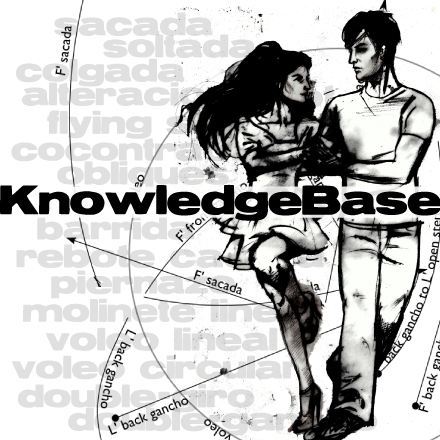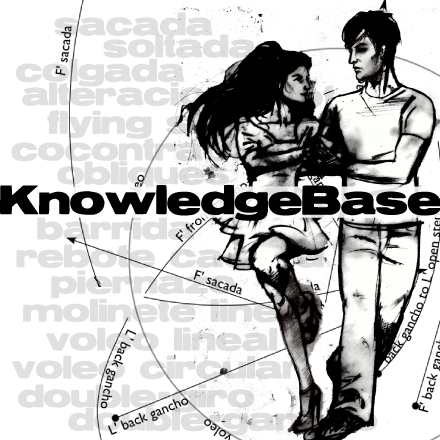This entry discusses continuous motion/consecutive steps in one direction. Be sure to check steps for all the technique needed to make just one step in the various directions.
Argentine Tango is, famously, a “walking dance”. Walking is highly refined, and more subtle and demanding than showy moves. Proper execution of a gancho can be taught in 5 minutes. Walking can take years to learn, although that oft-repeated fact ought to be a disgrace to teachers. The Mark’s front step walk is especially seductive, important, and challenging.
We walk on tracks which describes the geometry in the floor, and in two four-legged gaits: trot-system and pace-system.
The rest of this post describes the biomechanics of walking.
Mark walking front/Revel back
- Hundreds of instructions can be given to a mark trying to walk front. The four most powerful are:
- Maintain hip flexion at all times!
- You should be marking the revel’s back projection well before you start your front projection. Look down and check!
- As you transfer onto each new foot, concentrate on fully extending the knee and ankle joints of our old base leg. Prolonging this part of your step enables you to lever the bodies into the arch of connection and mark the start of the next projection with the strength of both legs.
- The revel should not hold her feet together at the end of the step, but stretch immediately into her next back projection. This is the part of the step where she should spend the most time.
- The revel must use intense hip flexion at the beginning and end of the step so as not to break the arch. Throughout this step she should wait for the Mark to move the arch, and not move through the transfer on her own.

Mark walking back/Revel front
- To project the Revel front or side, the Mark uses a gentle pull connection. He use his arc of muscles to pull 2mm on the arch of connection and feel the revel’s projection before moving. (He does not tug on her back, as that already disrupts her arc! He uses his body to pull on her points of connection. He does not pull with his hands!
- The pull connection is only information. Unless it is a series of fast back steps, which is rare, the pull is only used for the projection. As we finish the step and reestablish the arch of connection, we return to the default push connection. This connection allows the revel to use her ankle extension to lever both arcs into the arch of connection.
- Most revels step far too soon and too quickly, breaking the arch of connection. Projection means holding your arc, and extending your free leg until the Mark initiates the transfer.

Both partners walking lateral
The custom for moving lateral is to do so in molinete lineal. This is the default. Any other pattern must be marked precisely. The lateral mark is created by contraction of the obliques.
Speed
To speed up or slow down you need to use your arc of muscles with even more control.
- Do not lift the revel up to go fast. This common instruction actually slows her down.
- Do not lift the revel up to slow her down or stop her. This just confuses her. To hold her still, use the arch of connection. To decelerate, use the extension of your old base leg’s knee as a control system.
- Control speed and direction with the muscles of your legs. Co-contraction enables you to move very slowly off your base leg and also to change direction between fast steps.
- After speeding up, the challenge is to slow down. You must decelerate at the beginning of the last fast step, not at its end! Be ready for the slowdown, so you don’t take one extra fast step! Hold your muscles at the end of each step, so you are ready either to fire another fast one, or to hold your position to decelerate.











